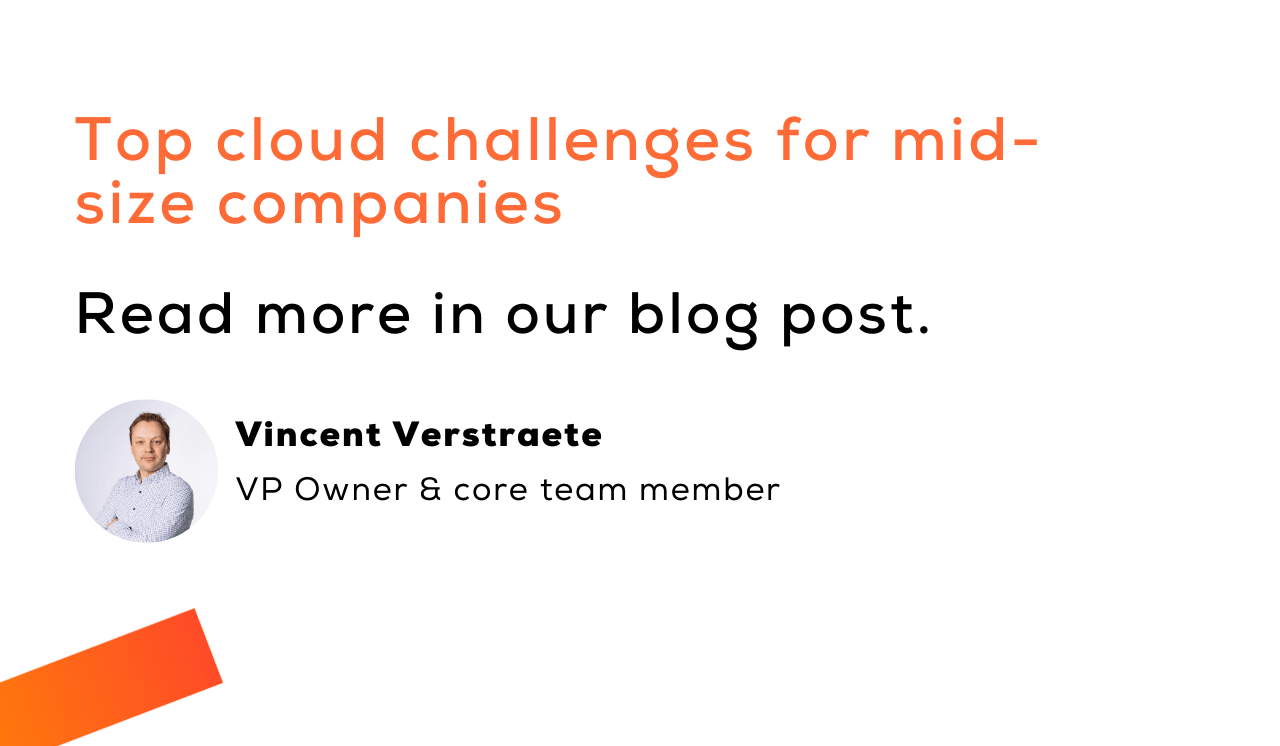
Every company nowadays has some sort of cloud strategy. For startups, it’s in most cases as straightforward as “just put everything in the cloud”, while most large enterprises have embarked on a major enterprise transformation program, gradually implementing cloud throughout the enterprise.
According to the Flexera State-of-the-Cloud report:
- 80% is running some business solutions in the cloud, and the other 20% are at least experimenting with cloud.
- COVID seems to be an additional accelerator in this trend due to the increased demand due to home/remote work, and the launch and increased usage of online services (think online orders).

Taking into account that Belgian companies are often a bit lagging behind in the adoption of IT trends or new technologies, the figures may shift a bit more towards the experimenting phase, but the trend is undeniable : cloud is here, and it’s here to stay.
Cloud for mid-size companies
In my experience, the companies that have the toughest time in their journey to cloud, are the mid-size companies. A typical mid-size application landscape consists of multiple core systems (a CRM, ERP, customer portal, legacy backend systems, …), often integrated directly or through some integration middleware. And while this landscape may not be as complex as for the big enterprise players, this complexity should be taken into account as it will influence different aspects of your target cloud architecture and your cloud journey in general.
All in a pragmatic way of course, as funding is more limited compared to large enterprises, and return-on-investment is expected on short or medium term.
Now let's talk cloud challenges
The advantage of technologies that have become mainstream, is that the challenges are also better understood and we can learn from the experiences of companies that went through the process of adopting this new technology.
Again from the Flexera State of the Cloud report (which I like because it makes a distinction between large enterprises and SMB/KMO business), see below an overview of the top challenges :

And digging a bit deeper, also shows how the focus shifts when cloud maturity increases:

A sound cloud governance framework (also encompassing cloud spend management) is a key asset that will guide any successful cloud transformation journey. Reminder to myself to write another blogpost on this. Even make it a blogpost series given the breadth of this topic.
Instead, I’d like to zoom in here on the top challenges that will pop up after your initial cloud (exploration) steps, related to lack of resources and/or expertise:
- Cloud matches very well with the new development paradigms (microservices, containers, serverless) and devops. If you really want to exploit cloud benefits, make sure to in-source the expertise on these topics, and/or to upskill your people.
- Cloud systems often need to be integrated, resulting in the need for cloud or hybrid integration capabilities, which differ from traditional on-premise integration.
- Cloud security: securing cloud assets isn’t the same as securing on-premise solutions where focus often was on keeping intruders out of your network. In cloud and hybrid architectures, the network is omni-present, so new techniques are required.
Stay tuned!
The evolution towards a cloud (or hybrid) landscape brings up several expertise gaps for most companies. The magnitude of these challenges is often directly linked to the complexity of the application landscape. Mid-size companies are often past the complexity “tipping point” but need to make intelligent (read : cost-effective) choices due to funding limitations.
In the next blogposts in this series, we’ll zoom in on the different expertise gaps, and how to cover them.








